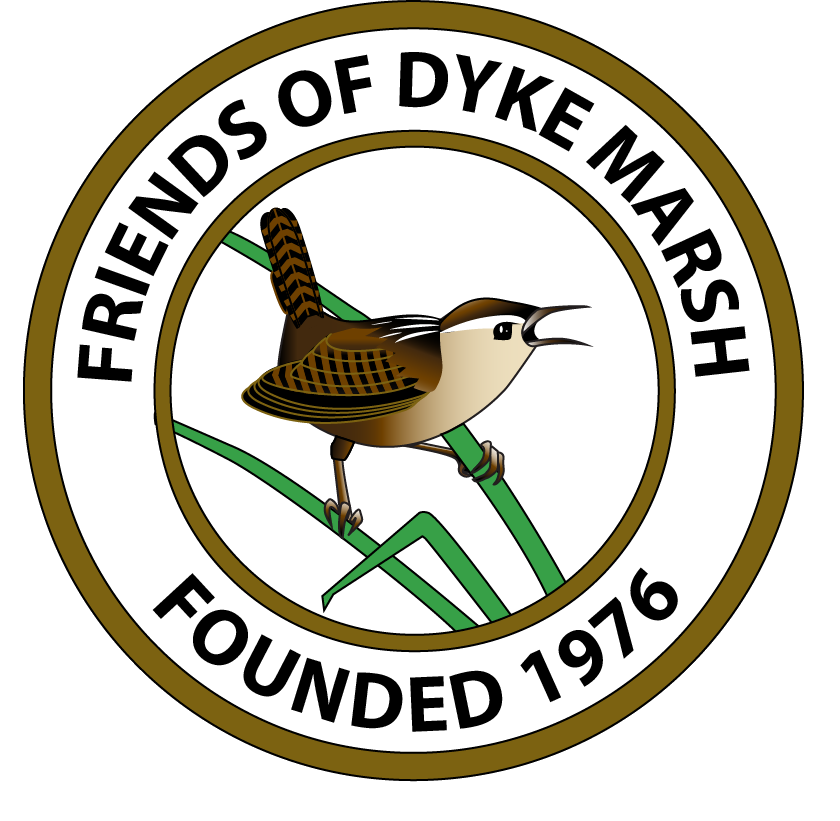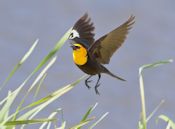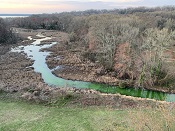Several talented photographers documented breeding birds in Dyke Marsh this spring, 2020.
News
Many people have enjoyed warblers migrating through Dyke Marsh this spring, 2020. Many species have bright colors. Some migrate from South America to northern Canada.
Keen observers have watched the parents and two young barred owls (Strix varia) in Dyke Marsh this spring, 2020. Ed Eder captured the two owlets doing mutual preening on April 17 and Ed reported that they usually stick close together.
Barred owls are known for their haunting, baritone night call, “who cooks for you, who cooks for you-all.” They get their name from their “bars” or striped plumage. Generally, they roost during the day and hunt at night. Adults are around 21 inches in length and a little over a pound in weight. They tend to be in older forests, but are highly adaptable to varied habitats, including mixed forests and disturbed areas. “Barred owls are the opportunists of the owl world,” wrote Leigh Clavez in The Hidden Lives of Owls.
Dyke Marsh has had another first this spring, 2020 -- several sightings of a yellow-headed blackbird (Xanthocephalus xanthocephalus). In fact, it is a record for the George Washington Memorial Parkway according to Brent Steury, the Parkway’s Natural Resources Program Manager.
The beautiful blackbird in Dyke Marsh is a male with a stunning yellow head, black body, yellow breast and white markings on its wings. Females and immature males are brown-black with reduced yellow on the face, throat and brow. These birds typically nest in the West and Midwest in colonies, often alongside red-winged blackbirds in bullrushes or cattails. They forage on insects, grain and wet seeds.
An osprey (Pandion haliaetus) was a victim of a bald eagle (Haliaeetus leucocephalus) attack on Sunday afternoon, March 22, 2020. The bald eagle may have attacked the osprey trying to defend his or her territory or because of what is called kleptoparisitism when one species steals food from another. The osprey came to the ground after the attack and was stuck in some bushes. FODMers Rich Rieger and Sherman Suter extracted the bird and Rich wrapped it up in his coat. Despite some bleeding, the osprey settled down and Rich placed the bird on a picnic table. After a moment, the osprey took flight, seemed normal to the human eye and landed in the top of a tree.
On March 20, 2020, around 7 a.m., several FODMers observed that the water in west Dyke Marsh and an unnamed stream flowing in the marsh was neon green. This part of the marsh is around 15 to 20 acres and west of the George Washington Memorial Parkway.
We contacted local, state and National Park Service officials. Fairfax County sent wastewater and hazardous materials staffers, the Virginia Department of Environmental Quality sent pollution experts and the National Park Service sent a staffer, all to inspect the site.






